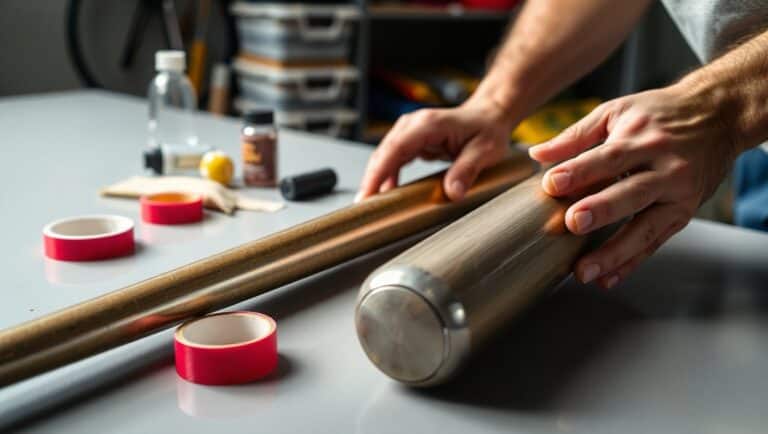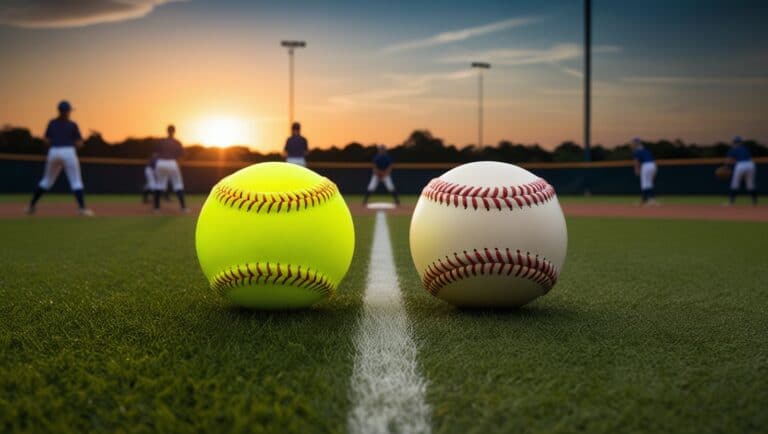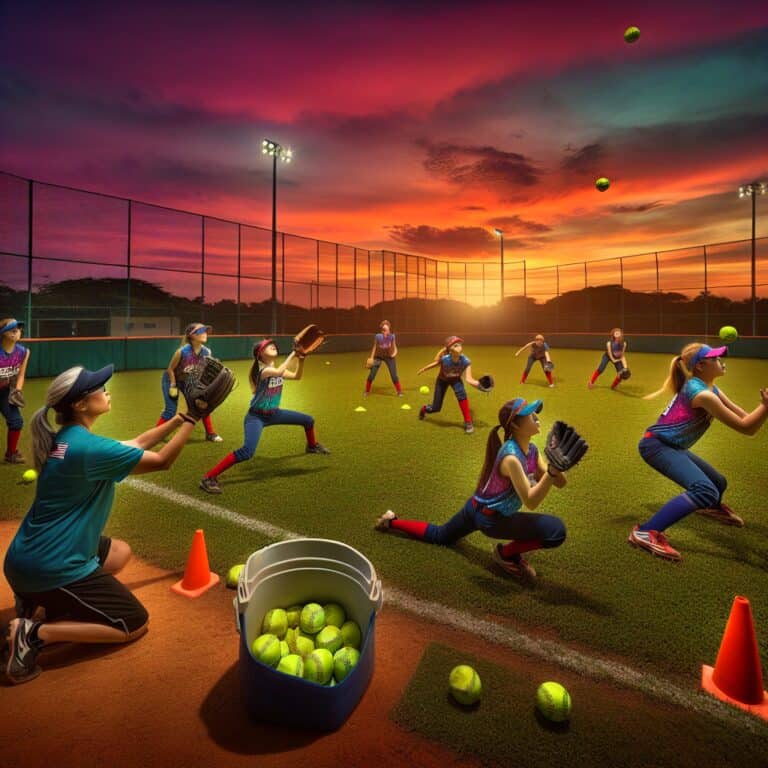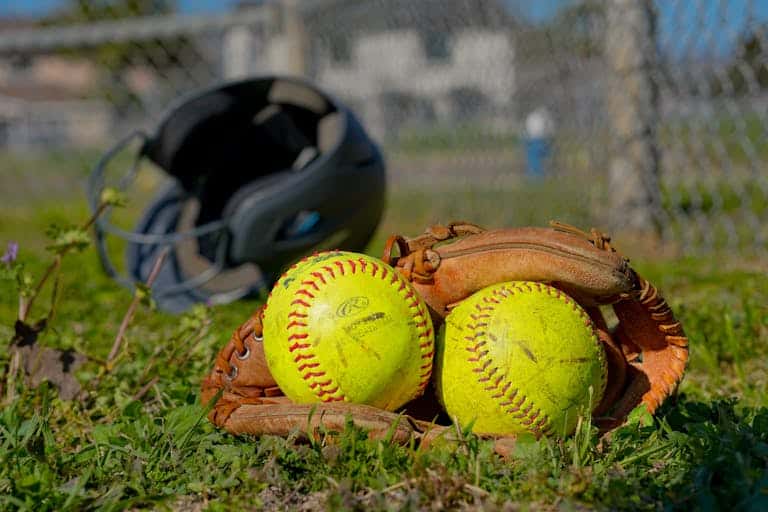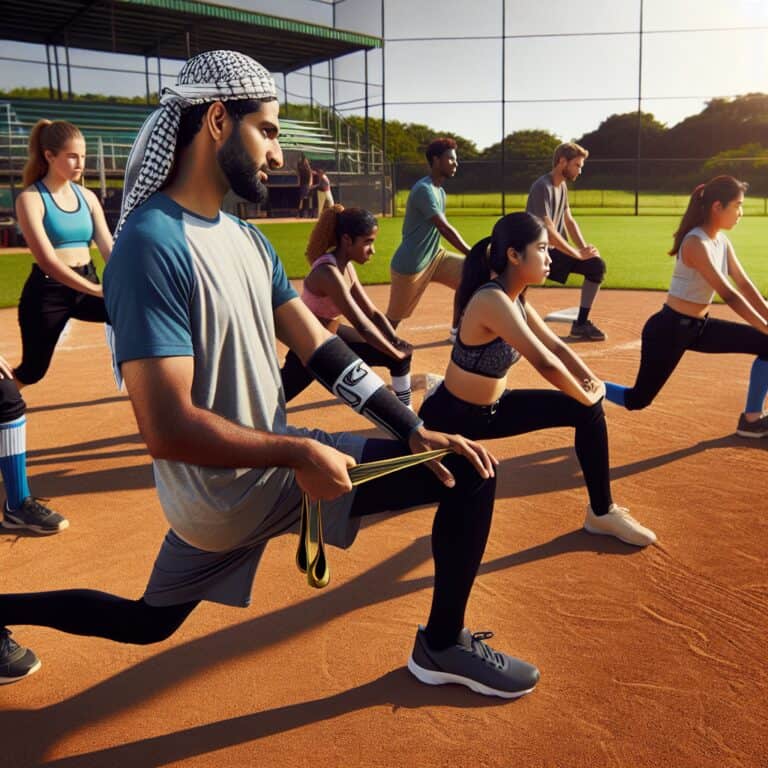Softball Cleats vs Turf Shoes Game-Changing Facts in 2025!

Hey there, fellow softball enthusiasts! Ever found yourself staring at your feet, wondering if you’ve got the right kicks for the diamond? You’re not alone! A lot of players struggle with choosing between softball cleats vs turf shoes. It’s a real head-scratcher, isn’t it? But don’t worry, I’ve got your back! Let’s unravel the mystery of cleats vs turf shoes. By the end of this, you’ll be strutting onto the field with confidence!
Understanding Softball Cleats
Alright, let’s dive into softball cleats! I’ve been coaching and playing for years, and the right footwear can make or break your game. Softball cleats are like the superheroes of the diamond – they’re designed to give you that extra oomph when you’re running the bases or fielding a tough grounder.
So, what exactly are softball cleats? Well, they’re specialized shoes with spikes or studs on the bottom that dig into the ground. Their main job is to give you traction and stability when you’re out there giving it your all. When you’re trying to make that game-winning catch, you don’t want to be slipping and sliding all over the place!
Now, there are a few different types of cleats you might come across. You’ve got your metal cleats, which are like the OG of the cleat world but are usually not allowed in slow-pitch softball due to their safety concerns for players. Pro-Tip: check your league or tournament rules for what type of footwear is allowed. If allowed these bad boys are great for digging into soft ground and giving you maximum grip.
Then there’s molded cleats, which have plastic or rubber spikes. They’re a bit more versatile and can be used on different surfaces. And don’t forget about interchangeable cleats – these are the Swiss Army knives of softball footwear, letting you swap out different types of spikes depending on the field conditions.
The key features of softball cleats are all about supporting your feet during those quick movements. They usually have a lower cut to allow for more ankle mobility, and the spikes are strategically placed to give you the best traction possible. Plus, many of them have reinforced toes to protect your feet.
When it comes to the best field conditions for wearing cleats, you’re gonna want to stick to natural grass and dirt fields. That’s where these shoes really shine. The spikes dig into the ground, giving you that solid foundation you need to make those explosive moves. Just keep in mind, if you’re playing on artificial turf, you can’t wear metal cleats – they will tear up the field and get you in trouble with the groundskeeper!
Exploring Turf Shoes for Softball
Let’s talk about turf shoes now. These are like the cool cousins of cleats, designed for a different kind of playing field. Turf shoes are basically sneakers with a special sole that’s made to grip artificial turf or harder surfaces. They’re perfect for when you’re practicing on those all-weather fields or playing in a league that uses artificial turf.
The design of turf shoes is pretty interesting. Instead of having those pointy spikes, they’ve got a bunch of small, rubber nubs all over the sole. It’s like having hundreds of tiny little suction cups on your feet! This design helps you get traction without tearing up the turf or risking injury on harder surfaces.
One of the big advantages of wearing turf shoes in softball is their versatility. You can wear these bad boys on pretty much any surface without worrying about damaging the field or your feet. They’re also great for quick lateral movements, which is super important when you’re trying to field a line drive or make a quick turn on the bases.
The ideal playing surfaces for turf shoes are, you guessed it, artificial turf fields! But they’re also great on hard-packed dirt, concrete, or even grass fields that are a bit on the drier side. I remember playing in Portland, Oregon where we had a tournament on fields that were part grass, dirt, and some turf – my turf shoes were a lifesaver that day!
Traction Comparison: Softball Cleats vs Turf Shoes
Okay, so let’s get down to the nitty-gritty – how do softball cleats vs turf shoes stack up when it comes to traction? This is where things get really interesting, and I’ve seen it make a real difference in player performance.
Cleats, with their longer plastic molded spikes or studs, are like the kings of grip on soft, natural surfaces. They dig deep into the dirt and grass, giving you that solid foundation for explosive starts and quick stops. On the flip side, turf shoes have that wider base of small nubs that spreads out your weight and gives you a different kind of stability. They might not dig in as deep, but they give you a more consistent grip across various surfaces.
When it comes to player performance and mobility, it really depends on the conditions. I’ve seen players absolutely fly around the bases in cleats on a well-maintained grass field. But put those same cleats on a hard, dry infield, and suddenly they’re slipping all over the place. Turf shoes tend to be more forgiving in different conditions, which can be a real game-changer when you’re dealing with unpredictable field maintenance.
Safety-wise, both have their pros and cons. Cleats can provide better ankle support and prevent slipping on wet grass, but they can also increase the risk of knee and ankle injuries if you get stuck in the ground during a quick turn. Turf shoes are generally easier on your joints and reduce the risk of those types of injuries, but they might not give you the same level of traction in all situations.
I’ve heard all sorts of opinions from players over the years. When I am playing the outfield I swear by my plastic molded spike cleats, as I can dig in and change direction on a dime. But I prefer turf shoes when I am looking for comfort especially on a slippery dry infield. At the end of the day, it often comes down to personal preference and what feels right for each player.
Comfort and Fit: Which Wins?
Let’s talk comfort, ’cause let’s face it, no one wants to be thinking about their aching feet when they’re trying to hit a home run. When it comes to softball cleats vs turf shoes, there’s definitely a difference in how they feel on your feet.
Softball cleats, especially when they’re new, can feel a bit stiff and uncomfortable. It’s like breaking in a new softball glove – it takes time and patience. The rigid sole that holds the spikes can make your feet feel a bit tired after a long game. But once you’ve broken them in, they mold more to your feet and can feel so much better.
Turf shoes, on the other hand, tend to be more comfortable right out of the box. They’re usually more flexible and have more cushioning, which can be a real blessing during those long tournaments or as you get older and your joints need a little extra relief. I remember this one time, playing in a tournament in Portland, Oregon with turf fields and by the third game, when I was wearing turf shoes I still felt great and was bouncing around those fields compared to tournaments on all grass and dirt infields and wearing my plastic molded cleats.
When it comes to fit, both types of shoes have their quirks. Cleats often run a bit narrow, which can be great for people with slim feet but a nightmare for those with wider feet. Turf shoes usually have a wider toe box, which gives your feet more room to spread out. This can be really important for maintaining good balance and preventing blisters.
The break-in period is where you’ll really notice a difference. Cleats can take several practices and games to really feel comfortable, and you might end up with a few blisters along the way. Turf shoes, though, are usually good to go after just a wear or two. It’s like they’re saying, “Hey, let’s play ball!” right from the start.
Long-term, both types of shoes can impact your foot health. Cleats provide more specific support for the movements in softball, which can be great for preventing certain types of injuries. But they can also be harder on your joints, especially if you’re playing on very hard surfaces. Turf shoes are generally easier on your feet and joints over time, but they might not provide as much sport-specific support.
In my experience, the most comfortable option often depends on the player and the conditions. Some of my players swear by their cleats and wouldn’t dream of wearing anything else, while others have converted to turf shoes and never looked back. It’s all about finding what works best for you and your feet.
Durability and Maintenance
Alright, let’s discuss keeping your softball footwear in tip-top shape. When it comes to durability, there’s quite a difference between softball cleats vs turf shoes, and trust me, I’ve seen my fair share of worn-out kicks over the years.
Cleats, especially those with metal spikes, can be pretty tough customers. They’re built to withstand the wear and tear of digging into the dirt and grass. I’ve had players who’ve used the same pair of cleats for multiple seasons. But, and this is a big but most softball leagues don’t allow you to use metal cleats due to some of the safety concerns compared to plastic molded cleats or turf shoes. Pro Tip: double check the league or tournament rules on what type of cleats are allowed. You’ve gotta clean ’em after every game, make sure they’re dry before you store them.
Turf shoes, on the other hand, tend to wear out a bit faster. That rubber sole that gives you all that great comfy traction? Yeah, it can start to smooth out after a season of heavy use. But the upside is they’re usually easier to maintain. A quick wipe down after the game and you’re good to go.
When it comes to cost-effectiveness, it’s not just about the initial price tag. Sure, some high end plastic molded cleats might cost a bit more upfront, but if they last longer, you might save money in the long run. Turf shoes might be cheaper to start with, but if you’re replacing them more often, those costs can add up.
Here’s a pro tip for extending the life of your softball footwear: rotate your shoes! If you’ve got both cleats and turf shoes, switch ’em up depending on the field conditions. This gives each pair a chance to dry out and recover between uses. Also, never, and I mean never, put your cleats or turf shoes in the dryer. That’s a surefire way to ruin them faster than you can say “strike out.”
Oh, and one more thing – always keep a spare pair of laces in your bag. You’d be surprised how often a broken lace can bench a player. Trust me, I’ve seen players pulled from games because the laces snapped!
Performance Impact on Different Field Types
How do softball cleats vs turf shoes perform on different playing surfaces? This is where things get really fun, and where your choice of footwear can make a huge difference in your game.
On a nice, well-maintained grass field, cleats are gonna be your best friend. They dig into the dirt and grass, giving you awesome traction for those quick starts and stops. I’ve seen outfielders make some incredible catches because their cleats gave them the grip they needed to change direction in a split second. On dirt infields, cleats can be great too, especially if the dirt is a little soft or damp. But watch out on those rock-hard infields – that’s where cleats can sometimes let you down, causing you to slip or even roll an ankle if you aren’t careful.
Now, turf shoes on grass and dirt? They’re not gonna give you quite the same level of traction as cleats, but they’re no slouch either. The rubber nubs provide a decent grip, and some players actually prefer the more consistent feel they get from turf shoes, especially on harder infields.
When it comes to artificial turf, though, turf shoes really shine. They’re designed specifically for this surface, and it shows. The small rubber nubs grip the artificial fibers perfectly, giving you great traction without tearing up the field. Cleats on artificial turf can be a bit of a nightmare – not only can they damage the surface, but they can also increase your risk of injury as they tend to slide easier on the artificial surface.
I remember this one tournament where we played on three different types of fields over a weekend. The players who had both cleats and turf shoes were able to adapt to each field, while those who only had one type of shoe struggled on at least one of the fields. It really drove home for me how important it is to have the right footwear for the conditions.
Injury Prevention and Player Safety
When it comes to injury prevention and player safety, the choice between softball cleats vs turf shoes is more important than you might think. I’ve seen my fair share of injuries over the years, and trust me, the right footwear can make a big difference.
Cleats, with their longer spikes, can provide excellent stability and support, especially on softer natural surfaces. They can help prevent slips and falls, which is great for avoiding those nasty twisted ankles or knee injuries. However, there’s a flip side to this coin. If your cleat gets stuck in the ground during a quick turn or stop, it can put a lot of stress on your ankle and knee. I’ve seen players go down hard because their cleats didn’t release from the ground when they needed to.
Turf shoes, on the other hand, tend to be a bit more forgiving. The shorter rubber nubs don’t dig into the ground as much, which can reduce the risk of that “stuck cleat” scenario. They also tend to provide more even support across your whole foot, which can be better for your overall foot health. But, they might not give you the traction you need on wet or slippery surfaces especially in the outfield grass, which could lead to slips and falls.
When it comes to ankle and foot stability, both types of shoes have their strengths. Cleats often have a stiffer construction that can provide more ankle support, which is great for lateral movements. Turf shoes usually have a more flexible design that allows for a greater range of motion, but might not offer as much rigid support.
In terms of joint stress and fatigue, turf shoes often have the edge. The softer, more cushioned soles can help absorb some of the impact when you’re running or jumping, which can be easier on your joints over a long game or tournament. Cleats, while great for performance, can sometimes lead to more fatigue, especially if you’re playing on very hard surfaces.
The consensus seems to be that both types of shoes have their place in injury prevention. The key is using the right shoe for the right conditions, and making sure they fit properly. A poorly fitting shoe, whether it’s a cleat or a turf shoe, is an injury waiting to happen.
The best shoe for injury prevention is the one that the player feels most stable and comfortable in. So while we can talk about the technical aspects all day, it’s really important to listen to your own body and choose the shoe that feels right for you.
Making the Right Choice: Softball Cleats vs Turf Shoes
Alright, let’s wrap this up and talk about how to choose between softball cleats vs turf shoes. This decision isn’t always straightforward, but I’ll give you some pointers to help you make the best choice for your game.
First off, consider the fields you play on most often. If you’re always on natural grass and dirt, cleats might be your best bet. They’ll give you that extra traction when you need it most. But if you find yourself on artificial turf or harder surfaces more often, turf shoes could be the way to go. They’re more versatile and can handle a variety of surfaces without missing a beat.
Think about your position too. Outfielders, who need to make quick starts and stops, often prefer the extra grip of cleats. Infielders, on the other hand, might appreciate the versatility of turf shoes, especially on harder infields. Pitchers and catchers? Well, they often have their own preferences based on their specific movements.
Don’t forget about the weather conditions you typically play in. If you’re in an area with lots of rain, cleats can give you better traction on wet grass. But if you’re playing in hot, dry conditions, turf shoes might be more comfortable and still provide enough grip.
Your own comfort and any foot issues you have should also factor into your decision. If you have sensitive feet or joint problems, the extra cushioning in turf shoes might be a godsend. But if you need a lot of ankle support, cleats might be a better option.
Here’s my two cents: if you can swing it, having both types of shoes is ideal. This gives you the flexibility to choose the best option for each game or practice based on the conditions. I’ve seen players show up to games with both pairs, check out the field during warm-ups, and then make their decision.
Remember, at the end of the day, the best shoe is the one that makes you feel confident and comfortable on the field. Whether that’s a cleat, a turf shoe, or having both in your bag, what matters most is that you feel ready to play your best game.
And hey, don’t be afraid to try out different options. Go to a local sporting goods store and try on different types! If you’ve always worn cleats, or vice versa. You might be surprised at what feels best for you. The most important thing is that you’re out there on the field, having fun and playing the game we all love. So lace up, whatever shoes you choose, and play ball!
Whew! We’ve covered a lot of ground in our softball cleats vs turf shoes showdown, haven’t we? Remember, there’s no one-size-fits-all answer – it all depends on your playing style, position, and field conditions. But hey, now you’re armed with all the info you need to make the best choice for your game. Whether you’re rocking cleats or sliding into turf shoes, the most important thing is to get out there and play your heart out! So, what are you waiting for? Lace up, step onto that field, and show ’em what you’ve got! And don’t forget to share your footwear experiences with your teammates – we’re all in this together!
Craving more softball wisdom? Unlock game-changing tips below!

